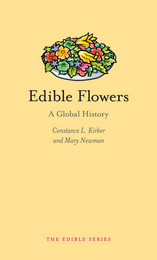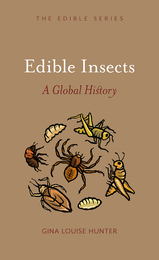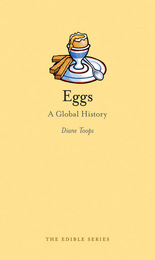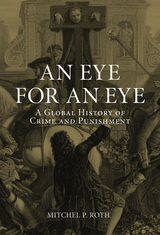123 books about Global History and 4
start with E
123 books about Global History and 4
123 books about Global History
4 start with E start with E
4 start with E start with E

Edible Flowers
A Global History
Constance L. Kirker and Mary Newman
Reaktion Books, 2016
Most of us like to look at them, but why on earth would anyone want to eat them? As Constance L. Kirker and Mary Newman show in this book, however, flowers have a long history as a tasty ingredient in a variety of cuisines. The Greeks, Romans, Persians, Ottomans, Mayans, Chinese, and Indians all knew how to cook with them for centuries, and today contemporary chefs use them to add something special to their dishes.
Edible Flowers is the fascinating history of how flowers have been used in cooking, from ancient Greek dishes to the today’s molecular gastronomy and farm-to-table restaurants. Looking at flowers’ natural qualities: their unique and beautiful appearance, their pungent fragrance, and their surprisingly good taste, Kirker and Newman proffer a bouquet of dishes—from soups to stews to desserts to beverages—that use them in interesting ways. Tying this culinary history into a larger cultural one, they show how flowers’ cultural, symbolic, and religious connotations have added value and meaning to dishes in daily life and special occasions. From fried squash blossoms to marigold dressings, this book rediscovers the flower not just as something beautiful but as something absolutely delicious.
Edible Flowers is the fascinating history of how flowers have been used in cooking, from ancient Greek dishes to the today’s molecular gastronomy and farm-to-table restaurants. Looking at flowers’ natural qualities: their unique and beautiful appearance, their pungent fragrance, and their surprisingly good taste, Kirker and Newman proffer a bouquet of dishes—from soups to stews to desserts to beverages—that use them in interesting ways. Tying this culinary history into a larger cultural one, they show how flowers’ cultural, symbolic, and religious connotations have added value and meaning to dishes in daily life and special occasions. From fried squash blossoms to marigold dressings, this book rediscovers the flower not just as something beautiful but as something absolutely delicious.
[more]

Edible Insects
A Global History
Gina Louise Hunter
Reaktion Books, 2021
From grasshoppers to grubs, an eye-opening look at insect cuisine around the world.
An estimated two billion people worldwide regularly consume insects, yet bugs are rarely eaten in the West. Why are some disgusted at the thought of eating insects while others find them delicious? Edible Insects: A Global History provides a broad introduction to the role of insects as human food, from our prehistoric past to current food trends—and even recipes. On the menu are beetles, butterflies, grasshoppers, and grubs of many kinds, with stories that highlight traditional methods of insect collection, preparation, consumption, and preservation. But we not only encounter the culinary uses of creepy-crawlies across many cultures. We also learn of the potential of insects to alleviate global food shortages and natural resource overexploitation, as well as the role of world-class chefs in making insects palatable to consumers in the West.
An estimated two billion people worldwide regularly consume insects, yet bugs are rarely eaten in the West. Why are some disgusted at the thought of eating insects while others find them delicious? Edible Insects: A Global History provides a broad introduction to the role of insects as human food, from our prehistoric past to current food trends—and even recipes. On the menu are beetles, butterflies, grasshoppers, and grubs of many kinds, with stories that highlight traditional methods of insect collection, preparation, consumption, and preservation. But we not only encounter the culinary uses of creepy-crawlies across many cultures. We also learn of the potential of insects to alleviate global food shortages and natural resource overexploitation, as well as the role of world-class chefs in making insects palatable to consumers in the West.
[more]

Eggs
A Global History
Diane Toops
Reaktion Books, 2014
Which came first, the chicken or the egg? In Hindu scripture, the world began as an egg. Laid by a swan floating on the waters of chaos, after a year the egg split into silver and gold halves, with the silver becoming the earth and the gold transforming into the sky. Throughout history, the egg has taken on numerous meanings outside of the famous philosophical dilemma: it was used for curing the evil eye by the Mayans, as protection against lightning in Greece, and to signify rebirth in Christian tradition. In Eggs, Diane Toops offers a fascinating tour of egg history and lore, looking at how its significance has represented the preoccupations of the cultures that consume it.
After explaining the many varieties of eggs and the places that favor them, Toops sketches a history of its uses from its origins until the present day, when it has become an integral part of modern cuisine. She explores how eggs are today marketed as a health food and discusses the debates over their nutritional status. Filled with appetizing recipes and beguiling images, this protein-packed book will enthrall anyone with an interest in cuisine or cultural history.
After explaining the many varieties of eggs and the places that favor them, Toops sketches a history of its uses from its origins until the present day, when it has become an integral part of modern cuisine. She explores how eggs are today marketed as a health food and discusses the debates over their nutritional status. Filled with appetizing recipes and beguiling images, this protein-packed book will enthrall anyone with an interest in cuisine or cultural history.
[more]

An Eye for an Eye
A Global History of Crime and Punishment
Mitchel P. Roth
Reaktion Books, 2014
From “an eye for an eye” to debates over capital punishment, humanity has a long and controversial relationship with doling out justice for criminal acts. Today, crime and punishment remain significant parts of our culture, but societies vary greatly on what is considered criminal and how it should be punished. In this global survey of crime and punishment throughout history, Mitchel P. Roth examines how and why we penalize certain activities, and he scrutinizes the effectiveness of such efforts in both punishing wrongdoers and bringing a sense of justice to victims.
Drawing on anthropology, archaeology, folklore, and literature, Roth chronicles the global history of crime and punishment—from early civilizations to the outlawing of sex crimes and serial homicide to the development of organized crime and the threat today of global piracy. He explores the birth of the penitentiary and the practice of incarceration as well as the modern philosophy of rehabilitation, arguing that these are perhaps the most important advances in the effort to safeguard citizens from harm. Looking closely at the retributions societies have condoned, Roth also look at execution and its many forms, showing how stoning, hemlock, the firing squad, and lethal injection are considered either barbaric or justified across different cultures. Ultimately, he illustrates that despite advances in every level of human experience, there is remarkable continuity in what is considered a crime and the sanctions administered.
Perfect for students, academics, and general readers alike, this interdisciplinary book provides a fascinating look at criminality and its consequences.
Drawing on anthropology, archaeology, folklore, and literature, Roth chronicles the global history of crime and punishment—from early civilizations to the outlawing of sex crimes and serial homicide to the development of organized crime and the threat today of global piracy. He explores the birth of the penitentiary and the practice of incarceration as well as the modern philosophy of rehabilitation, arguing that these are perhaps the most important advances in the effort to safeguard citizens from harm. Looking closely at the retributions societies have condoned, Roth also look at execution and its many forms, showing how stoning, hemlock, the firing squad, and lethal injection are considered either barbaric or justified across different cultures. Ultimately, he illustrates that despite advances in every level of human experience, there is remarkable continuity in what is considered a crime and the sanctions administered.
Perfect for students, academics, and general readers alike, this interdisciplinary book provides a fascinating look at criminality and its consequences.
[more]
READERS
Browse our collection.
PUBLISHERS
See BiblioVault's publisher services.
STUDENT SERVICES
Files for college accessibility offices.
UChicago Accessibility Resources
home | accessibility | search | about | contact us
BiblioVault ® 2001 - 2024
The University of Chicago Press









